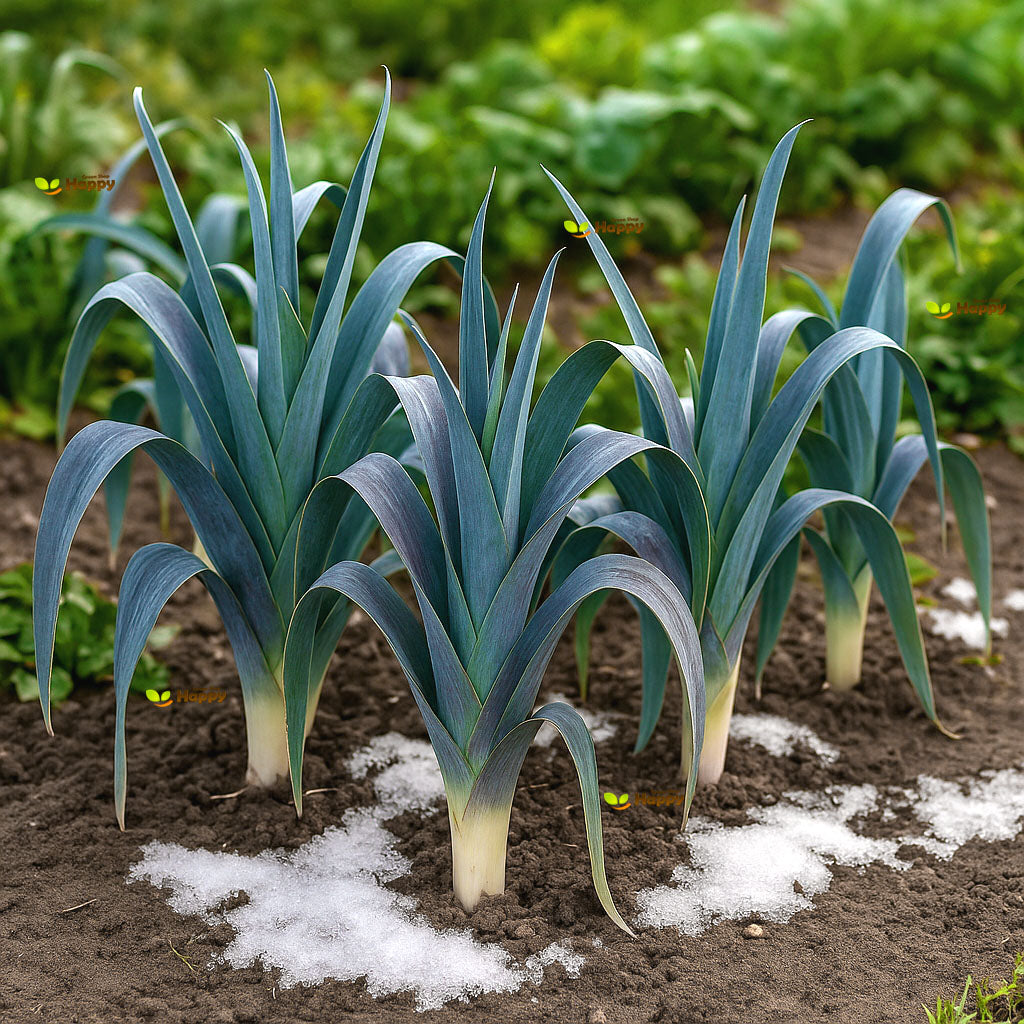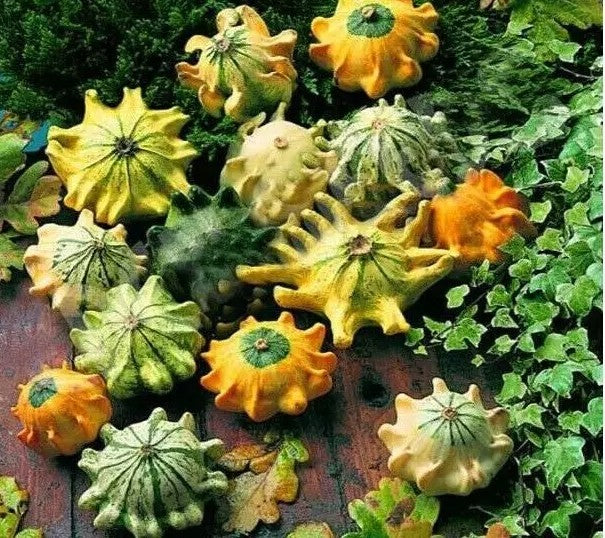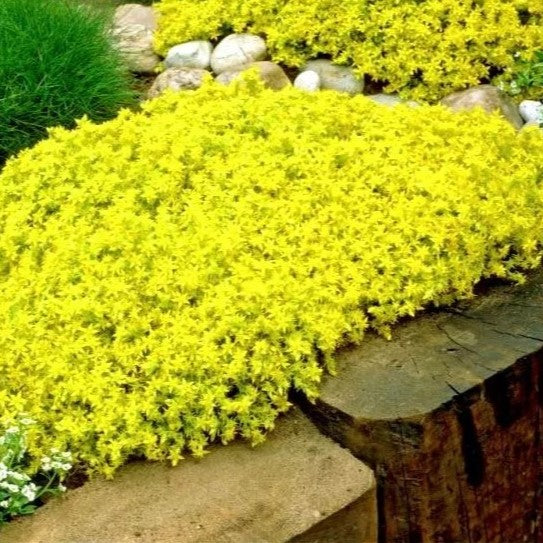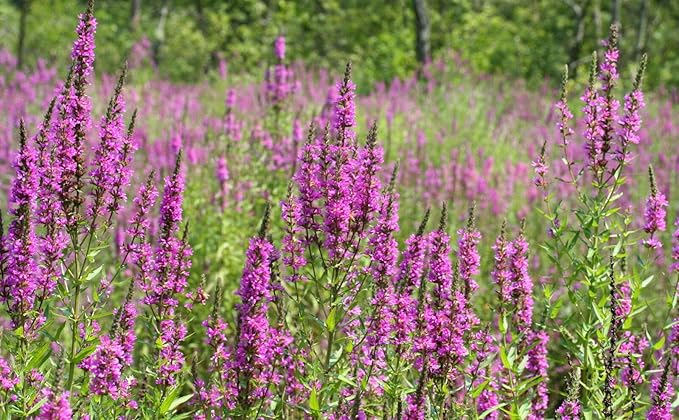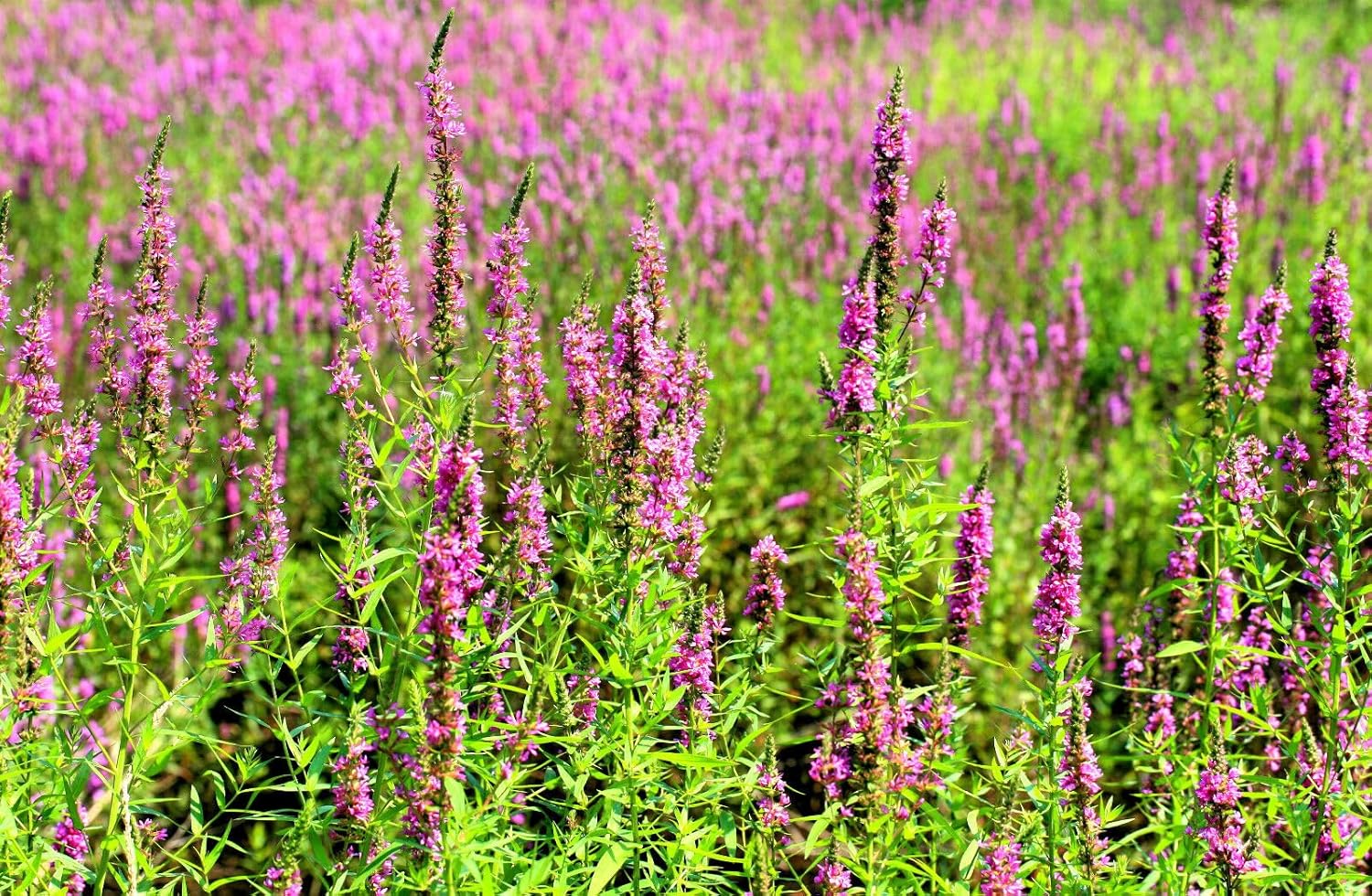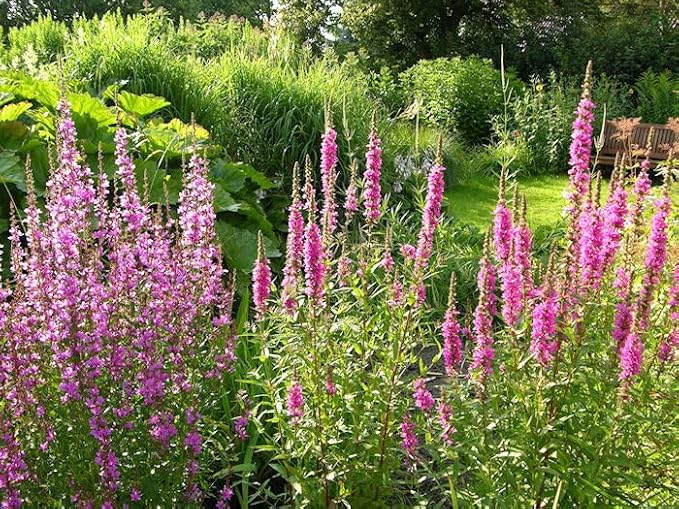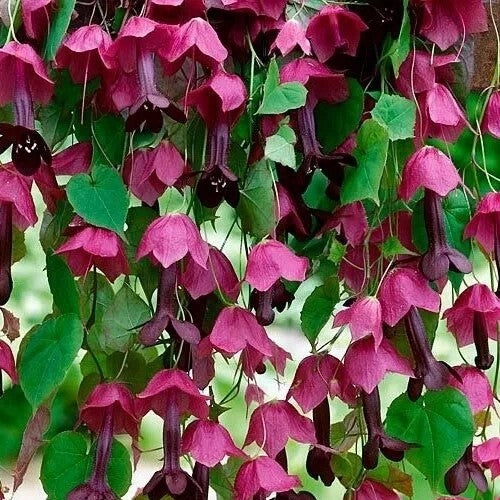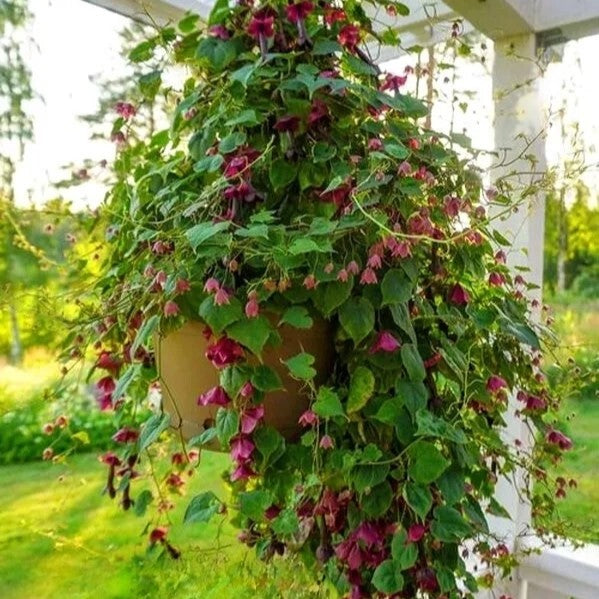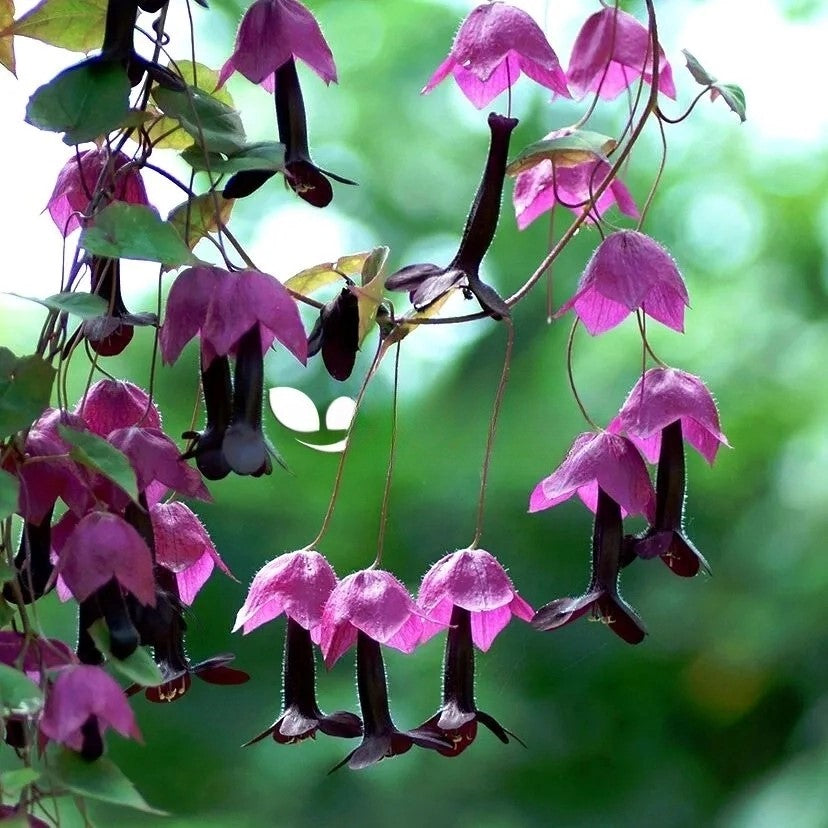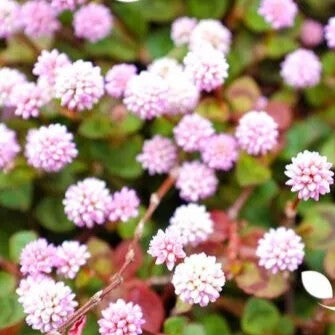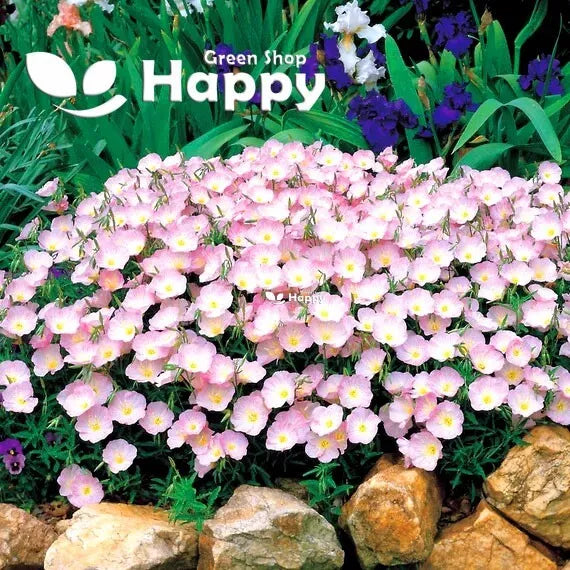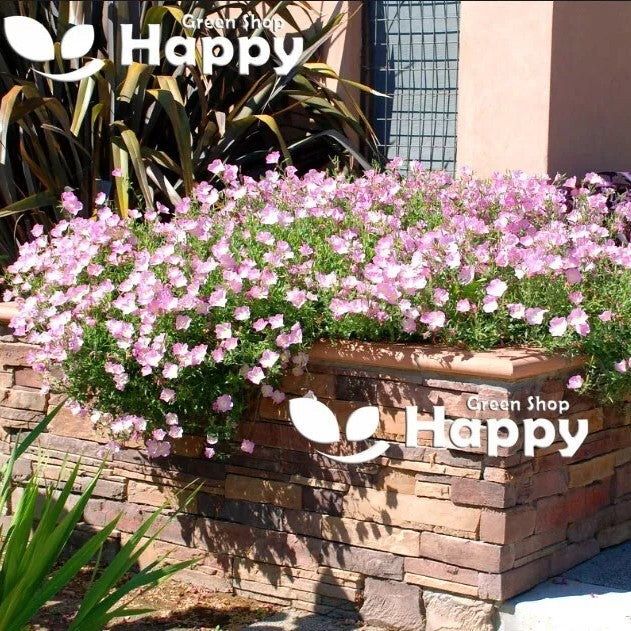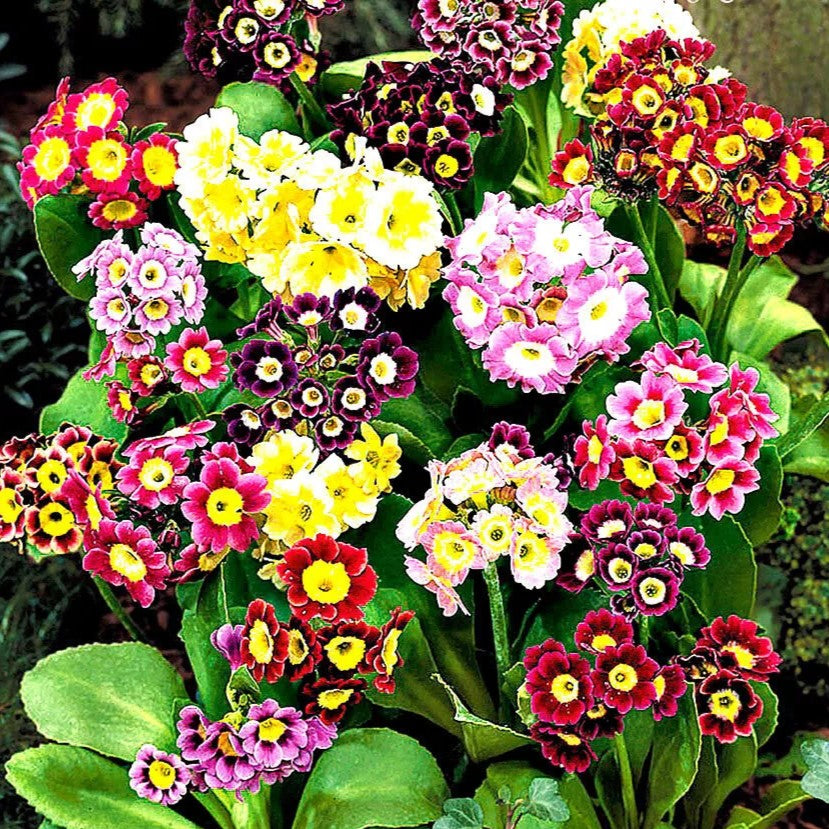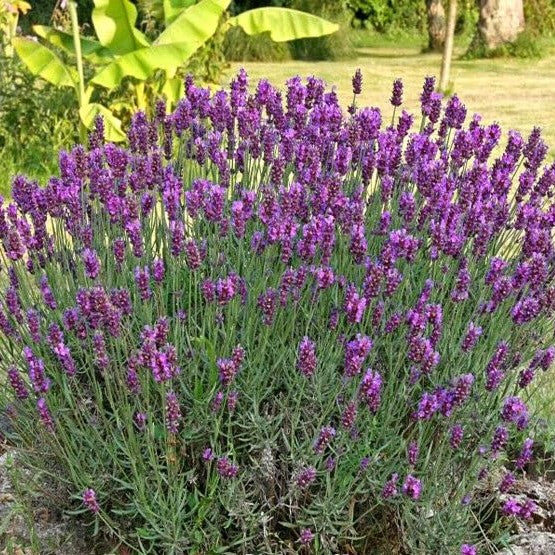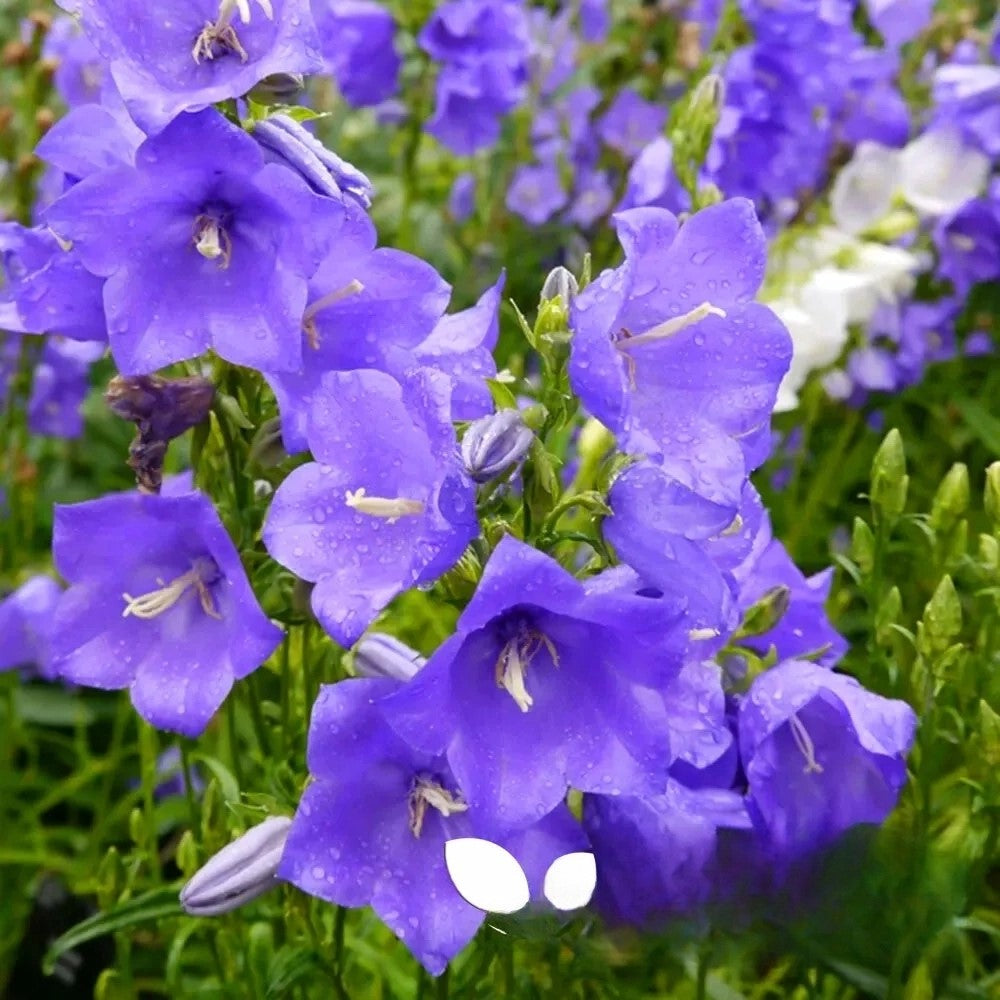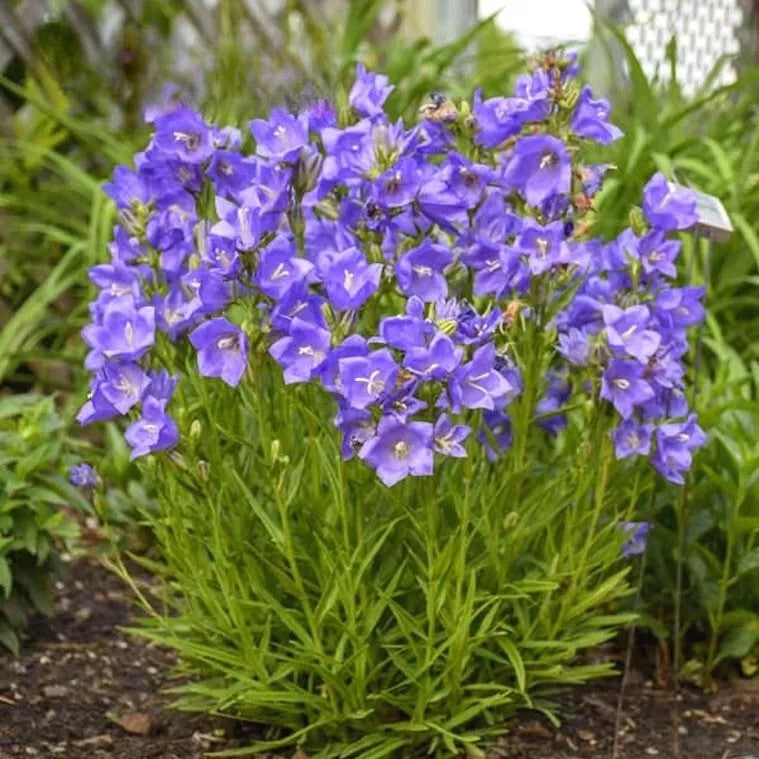Sort by:
224 products
224 products
Purple Loosestrife Seeds (Lythrum salicaria)
A striking perennial, Purple Loosestrife produces tall spikes of vibrant purple flowers throughout summer. Hardy and long-flowering, it adds vertical interest and color to borders, wetlands, and naturalistic garden plantings, attracting bees and butterflies.
What Makes It Special
-
Tall spikes of vivid purple flowers
-
Hardy, long-lasting perennial with dramatic vertical presence
-
Attracts pollinators, supporting wildlife-friendly gardens
Key Features
-
Botanical name: Lythrum salicaria
-
Hardy perennial
-
Height: 100–150 cm (3–5 ft)
-
Bloom time: Summer
Ideal For
-
Garden borders and wetland-style plantings
-
Naturalistic and cottage-style gardens
-
Pollinator-friendly landscapes
Sowing
-
Sow indoors Feb–Apr or outdoors Mar–May
-
Cover lightly with soil and keep moist
-
Germination: 14–28 days at 15–20°C
-
Thin seedlings 30–40 cm apart
-
Flowers in the first or second season after sowing
Purple Bell Vine – Seeds (Rhodochiton atrosanguineus)
The Purple Bell Vine is a striking climber admired for its exotic, lantern-like flowers. Each bloom features a rosy-purple bell with deep, maroon-black tubular centers, hanging gracefully against lush green, heart-shaped foliage. Fast-growing and elegant, it adds a dramatic touch to arches, trellises, pergolas, or hanging baskets. Native to Mexico, this tender perennial is usually grown as an annual in cooler climates.
What Makes It Special
-
Unique pendant bell-shaped flowers with rich colors
-
Long flowering season from summer to autumn
-
Ideal for vertical gardens and decorative screening
-
Can also be grown in containers for patios and balconies
Key Features
-
Botanical name: Rhodochiton atrosanguineus
-
Common name: Purple Bell Vine, Purple Bell Flower
-
Seed count: Approx. seeds per pack
-
Height/Spread: Climbs 3–4 m with support
-
Position: Full sun or light partial shade; well-drained soil
-
Flowering period: June to October
Ideal For
-
Trellises, arches, and fences
-
Vertical garden displays
-
Patio containers and hanging baskets
-
Exotic or tropical-style gardens
Sowing Instructions
-
When to sow: Indoors February–April
-
How to sow:
-
Sow on the surface of moist seed compost, pressing gently without covering (light aids germination)
-
Keep at 18–22°C and germination takes 21–30 days
-
-
Transplanting: Pot on seedlings when large enough and harden off before planting outside after last frost
-
Care: Provide climbing support; water regularly and feed for abundant flowering
Punching Balls Pink – Seeds (Polygonum capitatum)
Punching Balls Pink (Polygonum capitatum) is a charming perennial known for its dense, globe-shaped clusters of vibrant pink flowers. Blooming from late spring to early autumn, it creates a colorful, eye-catching display in borders, rockeries, and cottage gardens. Low-maintenance and easy to grow, this variety attracts pollinators and adds a bold, textured element to any garden space.
Why Grow "Punching Balls Pink"
-
Globe-shaped clusters of bright pink flowers
-
Long flowering season from late spring to early autumn
-
Hardy, low-maintenance perennial
-
Pollinator-friendly and visually striking
Key Features
-
Type: Perennial (Polygonum capitatum)
-
Height: 40–60 cm
-
Flowering: Late spring to early autumn
-
Position: Full sun to partial shade
-
Uses: Borders, rockeries, cottage gardens, pollinator-friendly planting
Ideal For
-
Bold, textured garden displays
-
Borders and rockeries
-
Cottage-style gardens
-
Pollinator-friendly planting schemes
Sowing & Growing
-
Sow indoors: February–April in trays or pots
-
Sow outdoors: April–May after frost
-
Germination: 10–20 days at 18–22°C
-
Thin seedlings 30–40 cm apart
-
Prefers well-drained soil in full sun to partial shade
-
Water moderately until established
Primrose Flower "Showy Evening" - Silky Orchid Pink - 1000 seeds (Oenothera speciosa)
£1.15
Unit price perPrimrose Flower "Showy Evening" - Silky Orchid Pink - 1000 seeds (Oenothera speciosa)
£1.15
Unit price perPrimrose Flower ‘Showy Evening’ – Silky Orchid Pink – Seeds (Oenothera speciosa)
Primrose Flower ‘Showy Evening’ (Oenothera speciosa) is a charming perennial featuring silky orchid-pink flowers with a delicate, evening-blooming fragrance. Blooming from late spring to early summer, it forms a low-growing carpet of blooms perfect for borders, rockeries, and cottage gardens. Hardy, low-maintenance, and drought-tolerant, this primrose attracts pollinators and adds soft, romantic color to your garden.
Why Grow "Showy Evening"
-
Silky orchid-pink flowers with evening fragrance
-
Long flowering season from late spring to early summer
-
Hardy, low-maintenance, and drought-tolerant perennial
-
Pollinator-friendly and ideal for ground cover
Key Features
-
Type: Perennial (Oenothera speciosa)
-
Height: 20–30 cm
-
Flowering: Late spring to early summer
-
Position: Full sun to partial shade
-
Uses: Borders, rockeries, cottage gardens, ground cover, pollinator-friendly gardens
Ideal For
-
Ground cover and low-growing flower beds
-
Cottage and rock gardens
-
Pollinator-friendly planting schemes
-
Adding soft, romantic color to borders and edges
Sowing & Growing
-
Sow indoors: February–April in trays or pots
-
Sow outdoors: April–May after frost
-
Germination: 10–20 days at 18–22°C
-
Thin seedlings 25–30 cm apart
-
Prefers well-drained soil in full sun to partial shade
-
Water moderately until established
Primrose Auricula Mixed – Seeds (Primula auricula pubescens)
Primrose Auricula Mixed (Primula auricula pubescens) is a treasured perennial, admired for its velvety, jewel-toned flowers often edged with a delicate dusting of silver or white. These compact plants bloom in spring, bringing old-world charm to borders, rock gardens, and containers. Hardy and long-lived, auriculas also provide early nectar for bees and pollinators.
Why Grow "Auricula Mixed"
-
Striking mix of velvety, multi-colored blooms
-
Hardy perennial with compact growth
-
Flowers in spring, adding early garden color
-
A traditional favorite among gardeners and collectors
Key Features
-
Type: Perennial (Primula auricula pubescens)
-
Height: 15–25 cm
-
Flowering: April–June
-
Position: Sun to partial shade
-
Uses: Borders, rockeries, containers, collectors’ displays
Ideal For
-
Adding spring charm to borders and beds
-
Rock gardens and alpine plantings
-
Patio pots and containers
-
Collectors seeking unique and traditional varieties
Sowing & Growing
-
Sow indoors: January–March in trays of fine compost
-
Germination: 21–30 days at 15–18°C (may be slow and uneven)
-
Transplant seedlings to small pots when large enough
-
Plant out after frost, spacing 20 cm apart
-
Prefers moist but well-drained soil in light shade
Primrose 'Potsdam Giants' Mixed Seeds (Primula acaulis)
The Primrose 'Potsdam Giants' Mix produces large, brilliantly colored blooms in a wide range of shades, from sunny yellows and bright reds to deep purples and pure whites. These compact perennials flower early in the season, brightening borders, containers, and window boxes when few other plants are in bloom. Hardy and reliable, they return each spring with cheerful, long-lasting flowers.
What Makes It Special
-
Extra-large primrose blooms in a vibrant color mix
-
Early-flowering to brighten late winter and spring gardens
-
Compact, hardy plants perfect for beds and containers
Key Features
-
Botanical name: Primula acaulis 'Potsdam Giants'
-
Hardy perennial (often grown as biennial)
-
Height: 15–20 cm (6–8 in)
-
Bloom time: Late winter to spring
Ideal For
-
Early spring displays in borders and beds
-
Patio pots and window boxes
-
Brightening shaded garden areas
Sowing
-
Sow indoors Feb–Jun in trays; do not cover seeds heavily
-
Keep at 15–20°C; germination in 14–28 days
-
Transplant seedlings 15 cm apart
-
Flowers from the following spring
Pink Lavender – Seeds
(Lavandula latifolia)
Pink Lavender is a beautiful perennial herb with aromatic foliage and soft pink-purple flower spikes that attract bees and butterflies. Its compact, upright growth makes it perfect for borders, rockeries, and containers. Drought-tolerant and low-maintenance, it adds fragrance and color to any garden while providing culinary and ornamental uses.
Why Grow Pink Lavender?
-
Soft pink-purple flower spikes with aromatic foliage
-
Attracts pollinators, especially bees and butterflies
-
Compact, upright perennial
-
Drought-tolerant and low-maintenance
Key Features
-
Type: Perennial
-
Height: 40–60 cm
-
Flowers: Summer
-
Position: Full sun
-
Soil: Well-drained, sandy or moderately fertile
Ideal For
-
Borders, rockeries, and container planting
-
Pollinator-friendly gardens
-
Fragrant garden displays and herbal uses
-
Low-maintenance ornamental planting
Sowing & Growing
-
Sow indoors: February–April in seed trays
-
Sow outdoors: April–May in prepared soil
-
Germination: 14–28 days at 18–22°C
-
Spacing: 30–40 cm apart
-
Care: Moderate watering; prune after flowering to maintain shape
Peach-Leaved Bellflower, Blue – Seeds (Campanula persicifolia)
Peach-Leaved Bellflower (Campanula persicifolia) is a hardy perennial producing elegant, deep blue, bell-shaped flowers atop tall, slender stems. Blooming from late spring to early summer, it adds vertical interest and graceful color to borders, cottage gardens, and mixed perennial beds. Low-maintenance and pollinator-friendly, this variety is perfect for adding classic charm and long-lasting beauty to any garden.
Why Grow "Peach-Leaved Bellflower"
-
Tall spikes of deep blue, bell-shaped flowers
-
Long flowering period from late spring to early summer
-
Hardy perennial, easy to grow
-
Attracts bees and other pollinators
Key Features
-
Type: Perennial (Campanula persicifolia)
-
Height: 60–90 cm
-
Flowering: Late spring to early summer
-
Position: Full sun to partial shade
-
Uses: Borders, cottage gardens, mixed perennial beds, pollinator-friendly gardens
Ideal For
-
Adding vertical interest and classic charm to borders
-
Cottage and mixed garden designs
-
Pollinator-friendly garden planting
-
Gardeners seeking hardy, long-flowering perennials
Sowing & Growing
-
Sow indoors: 6–8 weeks before last frost
-
Sow outdoors: After frost danger has passed
-
Germination: 14–21 days
-
Space seedlings: 30 cm apart
-
Prefers well-drained soil and sunny to partially shaded locations
Perez Sea Lavender – Seeds (Limonium perezii)
Description:
Bring long-lasting coastal charm to your garden with Perez Sea Lavender (Limonium perezii). This hardy perennial produces delicate clusters of lavender-purple flowers atop sturdy, evergreen foliage. Known for its drought tolerance and excellent performance in coastal conditions, Perez Sea Lavender is ideal for borders, rock gardens, and dried flower arrangements. Its long-lasting blooms attract pollinators and add subtle elegance to any garden.
Key Features
-
Hardy perennial with lavender-purple flower clusters
-
Evergreen foliage with strong, upright stems
-
Drought-tolerant and coastal-friendly
-
Long-lasting blooms, ideal for fresh and dried arrangements
-
Attracts bees and other pollinators
Ideal For
-
Coastal and rock gardens
-
Borders and mixed beds
-
Dried flower arrangements
-
Pollinator-friendly gardens
Sowing & Growing
-
Sow Indoors: February–April
-
Transplant Outdoors: May–June, after frost
-
Germination: 14–21 days at 18–22°C
-
Height: 60–80 cm
-
Spacing: 30–40 cm apart
-
Light: Full sun
-
Soil: Well-drained, sandy or fertile
Care Tips
-
Water regularly until established, then drought-tolerant
-
Remove spent blooms to encourage new growth
-
Mulch lightly in winter in colder climates
-
Minimal maintenance once mature
Showing 72/224

